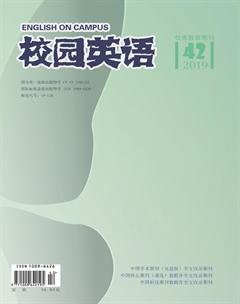An Application of Tury’s Descriptive Translation Studies in Science and Technology Text
【Abstract】 Science and technology text occupies a great proportion in non-literature translations, while most related studies applied translation techniques directly, and ignored hidden translation norms. In application of Turys Descriptive Translation Studies, this paper applies translation norms by comparing science and technology translations, which may provide reference for other translators. The analysis shows that addition is suitable in this case, including the addition of association words.
【Key Words】 Descriptive Translation Studies; Translation norms; Science and technology; Addition
【作者簡(jiǎn)介】張婉清(1992.09-),女,成都東軟學(xué)院,翻譯碩士。
1. Study Objectives
This paper aims to apply Turys Descriptive Translation Studies, which is not much used in scholars researches. Then, the writer hopes that other translators, especially those in the science and technology field, could be inspired.
2. Application of Turys Descriptive Translation Studies
(1) Overview of Descriptive Translation Studies. According to Toury, descriptive approaches are about looking into existing texts and describing the rules they seem to follow. He came up with the term “translation norms”, as hidden rules followed by the majority discovered by descriptive observation of actual translation.Toury defined the norms as (1995, p. 55) “the translation of general values and ideas shared by a community, as to what is right or wrong, adequate and inadequate, into performance instructions appropriate for and applicable to particular situations.” There are three translation norms. First are initial norms, a translator may subject to him-/herself either to the source text, or to the norms active in the target culture. If it is towards the ST, then the TT will be adequate; if the target culture norms prevail, then the TT will be acceptable. Second are preliminary norms, which involve the choice of translation policy and the directness of translation. Third are operational norms, which involve the presentation and linguistic matter of translated text.
(2)Translation of Science and Technology Text. This paper uses a typical science and technology work, The Motor Car: Past, Present and Future, which is a popular science reading edited by Ferderick Ling. It is an introduction to automotive engineering, to give normal people ideas about this technology. Since the book belongs to informative text, and target readers are normal people, the translator is required to apply plain language to convey as much information as possible under the guidance of initial norms, preliminary norms and operational norms mentioned above.
TT1:這兩個(gè)問(wèn)題需要同時(shí)處理,因?yàn)槟承p少污染的辦法會(huì)導(dǎo)致燃料消耗增長(zhǎng),反之亦然。
TT2:因?yàn)槟承p少污染的辦法會(huì)導(dǎo)致燃料消耗增長(zhǎng),或者反之,能源消耗減少但污染隨之加重,所以要合并討論環(huán)境和能源兩個(gè)問(wèn)題。
In TT1, the translation of “vice-versa” obviously shows that the translator subjects to the target culture, aiming to acceptability. However, the connotation of “vice-versa” should not be uncovered, otherwise readers may cannot understand the text completely. That is to say, the hidden information should be added. Besides, “the two problems” in ST is not revealed in TT1. Therefore, under the guidance of initial norms, TT2 with proper addition is more suitable.
ST: The electricity needed to fuel electric and hybrid vehicles and to produce hydrogen through water electrolysis may be generated by thermal, nuclear, hydroelectric, wind or solar power stations (p. 517).
TT1:熱能、核能、水能、風(fēng)能或太陽(yáng)能發(fā)電站可以提供用來(lái)驅(qū)動(dòng)電動(dòng)汽車和混合動(dòng)力車,以及水電解制氫所需要的電能。
TT2:熱能發(fā)電站、核能發(fā)電站、水能發(fā)電站、風(fēng)能發(fā)電站或太陽(yáng)能發(fā)電站不但可以提供電動(dòng)汽車和混合動(dòng)力車所需的電力,還能提供水電解制氫所需要的電能。
In this case, those underlined words actually match more than one objects.
3. Conclusion
Science and technology text contains information which should be fully passed to target readers, and become a part of the target culture. Therefore, as for the initial norms, translators ought to make the target text adequate firstly, and then consider acceptability. It influences the choice of translation policy. Examples show that addition is often used to achieve the goal, not only syntactically omitted information is restored, but also association words could be added upon the situation.
References:
[1]FerderickLing.(2014).TheMotorCar:Past,PresentandFuture.NewYork:Springer-Verlag.

